Have you ever wondered how the transparency of glass instruments in laboratories is achieved and maintained? How does this clarity impact the accuracy of scientific experiments? The quality and transparency of glassware, such as test tubes, beakers, and measuring cylinders, play a pivotal role in the precision of experimental observations and data collection.
In this post, we’ll delve into the importance of glass transparency in scientific instruments and explore advanced strategies for enhancing it. These strategies are not just about maintaining the aesthetic appeal of glassware but are crucial for the accuracy and reliability of experimental results.
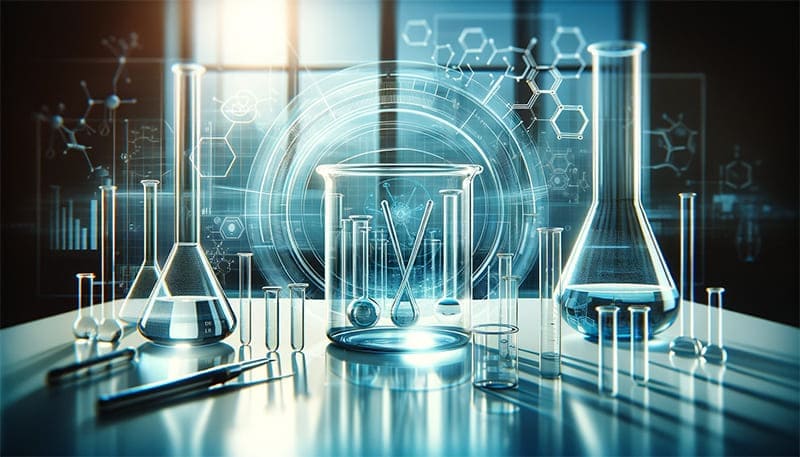
Understanding the Importance of Glassware Transparency
Glass instrument transparency refers to the degree to which these instruments allow light to pass through them, a key factor in their overall quality. Poor transparency can lead to light scattering, reflection, or absorption, affecting experimental observations and data accuracy.
Factors Affecting Glassware Transparency
The transparency of glassware is influenced by several factors, including the composition of the glass, its thickness, and the manufacturing process. Generally, the higher the purity and the thinner the glass, the better its transparency. The manufacturing process, including melting temperature and cooling speed, also plays a significant role, affecting the internal structure and surface quality of the glass.

Strategies for Enhancing Glass Instrument Transparency
- Selecting High-Quality Raw Materials: The purity and quality of the glass raw materials are crucial. High-quality materials reduce impurities and bubbles, enhancing the glass’s purity and uniformity, thereby increasing its transparency.
- Optimizing the Melting Process: Controlling the melting temperature, duration, and rate is essential for achieving a pure and transparent glass. Avoiding overheating and prolonged melting prevents defects like bubbles and oxides.
- Mastering the Molding Process: The glass molding process also affects transparency. Controlling mold temperature, cooling speed, and demolding time is crucial to prevent internal stress, cracks, and surface defects.
- Polishing Techniques: Polishing removes surface scratches and irregularities, enhancing the glass’s smoothness and transparency. Methods include mechanical, chemical, and electrolytic polishing.
- Thermal Treatment Controls: Thermal treatment improves the glass’s internal structure. Proper control of heating temperature, rate, and cooling speed is vital to prevent thermal stress and cracks.
- Surface Modification Technologies: Techniques like ion exchange and chemical vapor deposition improve the glass’s physical and chemical surface properties, enhancing its transparency and durability.
- Adhering to Standard Operating Procedures: Following correct usage methods and maintenance protocols is key to preventing damage and contamination.
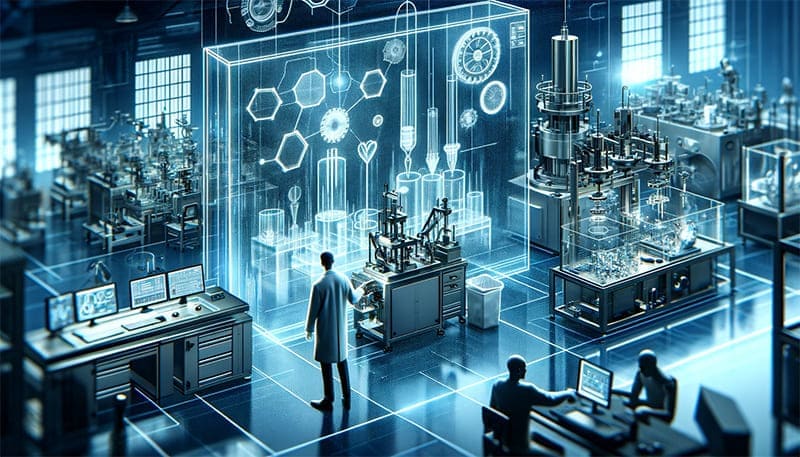
Advanced Techniques in Glass Instrument Fabrication
Improving the transparency of glass instruments goes beyond basic handling and cleaning. Advanced manufacturing techniques play a crucial role. Let’s explore some of these techniques:
Innovative Glass Composition
Developing new glass formulas that incorporate materials like borosilicate can significantly enhance transparency. These materials reduce the presence of impurities and inconsistencies within the glass structure, leading to clearer and more durable glassware.
Precision in Manufacturing
The precision in glass blowing and molding determines the uniformity of glass thickness, which is vital for transparency. Automated and computer-controlled glass forming processes ensure consistent quality and minimal human error.
Advanced Coating Technologies
Applying specialized coatings to glassware can improve not only transparency but also resistance to chemical and physical abrasions. These coatings, often nanometer-thin, can provide additional protection without compromising the glass’s clarity.
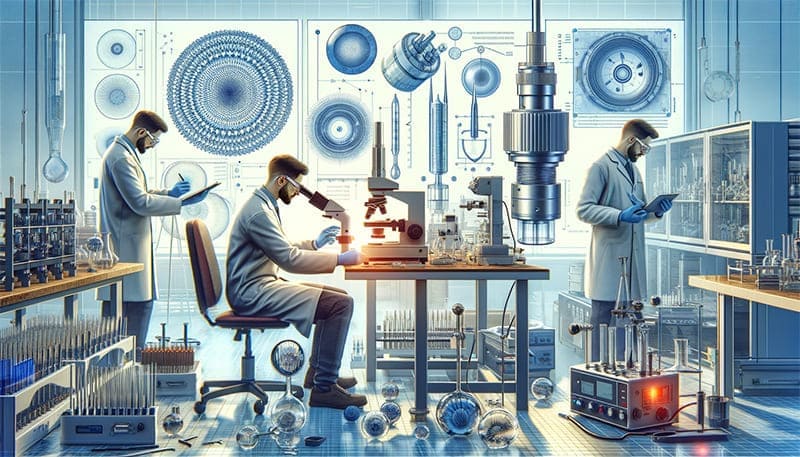
Expanding on Quality Control and Testing in Glass Instrument Manufacturing
Quality control and testing are crucial stages in the manufacturing process of glass instruments, ensuring that each product meets high standards of transparency and durability. Let’s delve deeper into these aspects.
Quality Control in Production
Quality control in glass instrument production involves several key steps:
- Raw Material Inspection: The process begins with a thorough inspection of raw materials. Suppliers are often required to provide certificates of analysis to ensure the materials meet the required purity and composition standards.
- Process Monitoring: Throughout the manufacturing process, parameters such as temperature, pressure, and humidity are closely monitored. Automated systems often regulate these conditions to ensure consistency.
- In-line Quality Checks: At various stages of production, in-line quality checks are conducted. This includes visual inspections for defects like bubbles or inconsistencies in thickness, and automated checks using sensors and cameras.
- Worker Training: Continuous training of workers is vital. Employees must be well-versed in handling materials, operating machinery, and recognizing potential quality issues.
Testing Standards and Procedures
Testing for glass instruments involves a series of standardized procedures to assess various qualities:
- Optical Clarity Testing: Optical clarity is assessed using photometric methods. Instruments measure the amount of light passing through the glass and detect any distortion or scattering of light.
- Thermal Shock Resistance Testing: This test involves exposing the glass to sudden changes in temperature to ensure it can withstand laboratory conditions. The glass is heated and then rapidly cooled, and inspectors look for signs of cracking or structural failure.
- Chemical Durability Testing: Chemical durability is tested by exposing the glass to various chemicals it’s likely to encounter in a lab setting. This tests the glass’s resistance to corrosion, etching, and discoloration.
- Dimensional Accuracy Testing: Precision instruments measure the dimensions of the glassware to ensure they meet specified tolerances. This is critical for items like measuring cylinders, where accuracy is essential.
- Strength Testing: The strength of the glass is tested by applying force until the point of breakage. This assesses the glass’s ability to withstand impacts and pressure changes.
Documentation and Compliance
Each batch of glassware is accompanied by documentation that details the results of these tests. Compliance with international standards, such as ISO or ASTM, is often required, especially for glassware used in critical research and medical applications.
Continuous Improvement
The data collected from quality control and testing feed into a continuous improvement process. Manufacturers analyze this data to identify trends and areas for improvement, leading to advancements in materials, manufacturing processes, and final product quality.
In-depth quality control and rigorous testing are essential components of glass instrument manufacturing, ensuring products meet the highest standards of transparency, durability, and accuracy. By adhering to stringent procedures and continuously seeking improvement, manufacturers can guarantee that their glassware not only meets the needs of the scientific community but also advances the field of research and experimentation.

Maintaining and Caring for Glass Instruments
Regular maintenance and proper handling of glassware are essential. Avoiding hard scratches, chemical exposure, and using appropriate cleaning agents and storage methods are crucial for preserving transparency and quality.
The Role of Environmental Factors
The environment in which glass instruments are used and stored can significantly impact their transparency. Factors such as humidity, temperature fluctuations, and exposure to corrosive chemicals can affect the glass’s clarity over time.
Humidity Control
In high humidity environments, glassware can become cloudy. Using dehumidifiers and storing glassware in controlled environments can prevent this degradation.
Temperature Management
Extreme temperatures, both hot and cold, can stress the glass, leading to microfractures and a loss of transparency. Maintaining a stable temperature in storage and usage areas is critical.
Education and Training for Laboratory Personnel
Proper training in the handling, cleaning, and storage of glass instruments is essential. Educating laboratory personnel on the importance of maintaining glassware transparency can lead to better practices and prolonged instrument life.
Workshops and Seminars
Regularly conducting workshops on the proper care and maintenance of glassware helps in reinforcing best practices among laboratory staff.
Standard Operating Procedures
Creating and enforcing standard operating procedures (SOPs) for the use and care of glass instruments ensures consistency in handling and maintenance, which is critical for maintaining transparency.
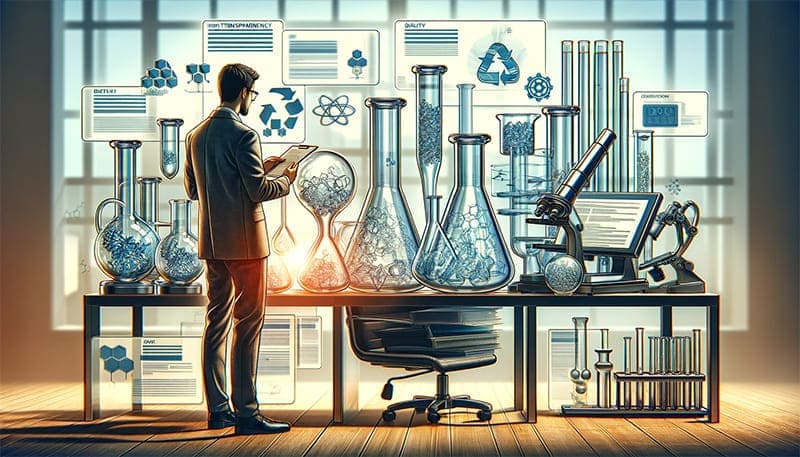
Purchasing High Transparency Laboratory Glassware
Selecting the right high transparency laboratory glass instruments is crucial for ensuring accuracy and reliability in scientific experiments. Here’s a guide to help you make informed purchasing decisions.
Identifying Reputable Manufacturers
- Research Manufacturers: Start by researching manufacturers known for their high-quality glassware. Look for companies with a strong reputation in the scientific community.
- Certifications and Standards: Check if the manufacturer adheres to international standards like ISO or ASTM. Certifications are a testament to the quality and reliability of their products.
- Reviews and Recommendations: Consult reviews from other laboratories or scientists. Recommendations from peers can be invaluable in identifying reliable suppliers.
Evaluating Product Quality
- Transparency and Material Quality: Ensure the glassware offers high transparency and is made from quality materials like borosilicate or quartz glass. This can often be determined from product specifications.
- Quality Control Processes: Inquire about the manufacturer’s quality control processes. Understanding their quality checks and testing methods can give you confidence in the product’s reliability.
- Customization Options: Some experiments may require customized glassware. Check if the manufacturer can accommodate specific dimensions or features.
Checking for Product Range and Availability
- Wide Product Range: Choose suppliers with a wide range of products. A broad selection ensures that you can find all the necessary types of glassware for your laboratory needs.
- Availability and Lead Times: Consider the availability of products and lead times for delivery. Reliable suppliers maintain sufficient stock and provide realistic delivery schedules.
Assessing After-Sales Support
- Warranty and Returns: Understand the warranty terms and the process for returns or replacements. A good warranty reflects the manufacturer’s confidence in their product.
- Customer Service: Good customer service is crucial, especially if you need guidance on product selection or have after-sales inquiries.
Cost Considerations
- Pricing: While price should not be the only deciding factor, it’s important to compare prices from different suppliers to ensure you are getting value for your money.
- Bulk Purchase Discounts: If you’re purchasing in large quantities, ask about bulk purchase discounts. This can significantly reduce the overall cost.
- Shipping Costs: Don’t forget to factor in shipping costs, as these can add up, especially for bulk orders or international shipments.
Online vs Offline Purchasing
- Online Suppliers: Online suppliers often offer competitive prices and a wide selection. However, ensure the website is reputable and provides sufficient product information.
- Local Suppliers: Purchasing from local suppliers can have advantages, such as easier returns and quicker delivery. It also supports local businesses.
Purchasing high transparency laboratory glass instruments requires careful consideration of the manufacturer’s reputation, product quality, range, after-sales support, and cost. By taking these factors into account, you can ensure that you acquire reliable, high-quality glassware that meets your laboratory’s needs and contributes to the accuracy and effectiveness of your scientific work.
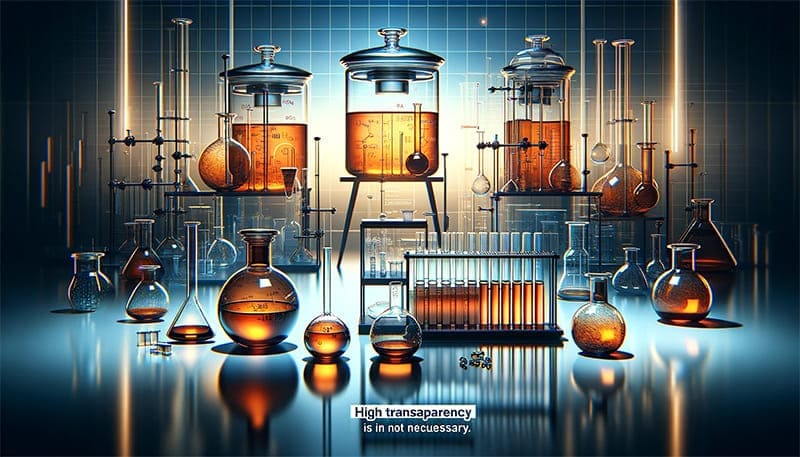
Situations Where High Transparency is Not Required in Laboratory Glass Instruments
While high transparency is often crucial for accuracy in many laboratory settings, there are specific scenarios where it is not necessary, or even advisable, to use highly transparent glassware. Understanding these situations is key to selecting the right type of glass instruments for your experiments.
Experiments Involving Light-Sensitive Chemicals
- Photoreactive Substances: Certain chemicals are sensitive to light, particularly UV rays. These substances can degrade or react undesirably when exposed to light. For such chemicals, amber or dark-colored glassware is preferred to prevent light penetration.
- Long-term Storage: When storing light-sensitive chemicals for long periods, it’s essential to use opaque or tinted glassware. This helps maintain the integrity of the substances over time.
Heat Absorption and Temperature Control
- Heat-Sensitive Reactions: In experiments where controlling the temperature is crucial, using less transparent glassware can be beneficial. Darker glass can absorb heat, which might be necessary for specific reactions.
- Thermal Insulation: Some experiments might require minimizing the impact of external temperature changes. In such cases, glassware that is less transparent and thicker can provide better insulation.
Safety and Hazardous Materials
- Handling Hazardous Substances: When working with hazardous or highly reactive substances, it’s often safer to use glassware that can contain any unexpected reactions or splashes. In these cases, the clarity of the glass is less important than its strength and reactivity resistance.
- Visual Distinction: Using colored or less transparent glassware can help in quickly distinguishing between different types of substances, especially in a setting where multiple chemicals are used.
Cost-Effective Solutions for Non-Critical Applications
- Routine Work: For routine lab work where precision measurement or observation is not critical, less transparent glassware can be a cost-effective choice.
- Educational Purposes: In educational settings, where the focus might be more on learning techniques rather than precision, using less transparent glassware can be a practical and economical option.
Understanding when high transparency is not necessary in laboratory glass instruments is crucial for efficient lab management and safety. Selecting the right type of glassware based on the specific needs of the experiment, whether it’s for light sensitivity, temperature control, safety, or cost considerations, ensures both the accuracy and safety of laboratory work. This awareness helps in optimizing resources and choosing the most suitable glassware for each unique laboratory application.
Conclusion
In conclusion, the journey to achieving perfect clarity in laboratory glassware is both an art and a science. As we’ve explored, the meticulous process of enhancing transparency is pivotal for scientific precision. Embark on this path of clarity in your laboratory practices, embracing these strategies to unlock new horizons in research and discovery. Let’s strive for a clearer view in every experiment!










